The Cat's Meow is a 2001 period drama film directed by Peter Bogdanovich, and starring Kirsten Dunst, Eddie Izzard, Edward Herrmann, Cary Elwes, Joanna Lumley and Jennifer Tilly. The screenplay by Steven Peros is based on his play of the same title, which was inspired by the mysterious death of film mogul Thomas H. Ince that occurred on William Randolph Hearst's boat with Charles Chaplin on board.
| The Cat's Meow | |
|---|---|
Theatrical release poster | |
| Directed by | Peter Bogdanovich |
| Produced by | Julie Baines Kim Bieber Carol Lewis Dieter Meyer |
| Screenplay by | Steven Peros |
| Based on | The Cat's Meow by Steven Peros |
| Starring | Kirsten Dunst Edward Herrmann Eddie Izzard Cary Elwes Joanna Lumley Jennifer Tilly |
| Music by | Ian Whitcomb |
| Cinematography | Bruno Delbonnel |
| Edited by | Edward G. Norris |
Production company | Dan Films CP Medien |
| Distributed by | Swipe Films (UK) Lionsgate |
Release date |
|
Running time | 114 minutes |
| Country | United States Germany United Kingdom |
| Language | English |
| Budget | $7 million |
| Box office | $3,646,994 |
The film takes place aboard publisher William Randolph Hearst's yacht on a weekend cruise celebrating Ince's 44th birthday on November 16, 1924. Among those in attendance are Hearst's longtime companion and film actress Marion Davies, fellow actor Charlie Chaplin, writer Elinor Glyn, columnist Louella Parsons, and actress Margaret Livingston. The celebration is cut short by an unusual death that would go on to become the subject of legendary Hollywood folklore.
Screenplay
November 15, 1924: Among those boarding the luxury yacht Oneida in San Pedro, California are its owner, publishing magnate William Randolph Hearst, and his mistress, silent film star Marion Davies; motion picture mogul Thomas H. Ince, whose birthday is the reason for the weekend cruise, and his mistress, starlet Margaret Livingston (who would portray "the Woman From the City" in F.W. Murnau's Sunrise: A Song of Two Humans three years later); international film star Charlie Chaplin; English writer Elinor Glyn; and Louella Parsons, a film critic for Hearst's New York American.
Several of those participating in the weekend's festivities are at a crossroads in their lives and/or careers. Chaplin, still dealing with the critical and commercial failure of A Woman of Paris and rumors he has impregnated 16-year-old Lita Grey (who appeared in his film The Kid) is in the midst of preparing The Gold Rush. Davies longs to appear in a slapstick comedy rather than the somber costume dramas to which Hearst has kept her confined. Ince's eponymous film studio is in dire financial straits, so he hopes to convince Hearst to take him on as a partner in Cosmopolitan Pictures. Parsons would like to relocate from the East Coast to more glamorous Hollywood.
Hearst suspects Davies and Chaplin have engaged in an affair, a suspicion shared by Ince, who seeks proof he can present to Hearst in order to curry favor with him. In the wastepaper basket in Chaplin's stateroom, Ince discovers a discarded love letter to Davies and pockets it with plans to produce it at an opportune moment. When he finally does, Hearst is enraged. His anger is fueled further when he finds a brooch he had given Davies in Chaplin's cabin. Hearst concludes it was lost there during a romantic liaison, and he rifles Marion's room for further evidence.
Armed with a pistol, Hearst searches the yacht for Chaplin in the middle of the night. Ince, meanwhile, runs into Davies and the two sit and talk with Ince donning a hat Chaplin had worn. Davies explains to Ince her love for Hearst and her regret at an earlier affair with Chaplin. She states "I never loved him" just as Hearst arrives behind them. Thinking Davies is referring to him, and mistaking Ince for Chaplin, a jealous Hearst shoots Ince. The assault is witnessed by Parsons, who had heard noises and went to investigate.
Hearst arranges to dock in San Diego and have a waiting ambulance take the dying Ince home. He phones the injured man's wife and tells her Ince attempted suicide when Livingston tried to end their affair, assuring her the truth won't reach the media. To the rest of his guests he announces Ince's ulcer flared up and required immediate medical attention. Davies, of course, knows the truth, and confides in Chaplin. Also armed with that knowledge is Parsons, who assures Hearst his secret will be safe in exchange for a lifetime contract with the Hearst Corporation, thus laying the groundwork for her lengthy career as one of Hollywood's most powerful gossip columnists.
After seeing Ince off, Hearst confronts Davies and Chaplin. He is berated by Chaplin, who expects Davies to join him. Hearst, however, challenges Chaplin to guarantee Davies that he can promise her a happy life. When Chaplin fails to answer, Hearst informs Chaplin of the vow of silence he and the fellow guests have made to keep the weekend's activities a secret. Chaplin despairs as he realizes the murder has strengthened Davies' love for Hearst.
The film concludes with the guests leaving Ince's funeral, as Glyn relates what became of them:
- Livingston went on to star in a number of successful films and her film salary "inexplicably" went from $300 to $1000 a film.
- Davies starred in more of Hearst's films before finally being allowed to feature in a comedy The Hollywood Revue of 1929, which was (as Chaplin predicted) a success. She stayed by Hearst's side until his death in 1951.
- Chaplin married his teenage lover Lita Grey in Mexico and his film The Gold Rush was an overwhelming success.
- Parsons worked for Hearst for many years and subsequently became one of the most successful writers in the history of American journalism.
Tom Ince was largely forgotten after the events of his death. Very few newspapers reported it, no police action was taken, and of all the people on board only one was ever questioned. It is concluded that in Hollywood, "the place just off the coast of the planet Earth," no two accounts of the story are the same.
- Kirsten Dunst as Marion Davies
- Edward Herrmann as William Randolph Hearst
- Eddie Izzard as Charlie Chaplin
- Cary Elwes as Thomas H. Ince
- Joanna Lumley as Elinor Glyn
- Jennifer Tilly as Louella Parsons
- Claudia Harrison as Margaret Livingston
- James Laurenson as Dr. Daniel Goodman
- Ronan Vibert as Joseph Willicombe
- John C. Vennema as Frank Barham
- Ingrid Lacey as Jessica Barham
- Victor Slezak as George Thomas
- Chiara Schoras as Celia
- Claudie Blakley as Didi
- Steven Peros as Elinor's driver
Film scholar Jonathan Rosenbaum, editor of the 1992 book This is Orson Welles — a record of interviews Peter Bogdanovich conducted with Orson Welles — began his April 2002 review of The Cat's Meow with this exchange about Citizen Kane (1941):
OW: In the original script we had a scene based on a notorious thing Hearst had done, which I still cannot repeat for publication. And I cut it out because I thought it hurt the film and wasn’t in keeping with Kane’s character. If I’d kept it in, I would have had no trouble with Hearst. He wouldn’t have dared admit it was him.
PB: Did you shoot the scene?
OW: No, I didn’t. I decided against it. If I’d kept it in, I would have bought silence for myself forever.
"The incident Welles alluded to in this exchange is the subject of The Cat’s Meow, directed by Bogdanovich and adapted by Steven Peros from his own play," Rosenbaum wrote. "Bogdanovich may see Welles as the inspiration for his film, but I have no idea where Peros got his facts."
Rosenbaum did find a similar story in the 1979 edition of The Film Encyclopedia by Ephraim Katz, in the entry on Thomas Ince; and in the 1971 essay on Citizen Kane by Pauline Kael:
Her principal source was John Houseman, script supervisor for cowriter Herman Mankiewicz, and it seems safe to conclude, even without her prodding, that some version of the story must have cropped up in Mankiewicz’s first draft of the script, which Welles subsequently edited and added to. According to Kael, the only trace of the subplot left in the script is a speech made by Susan Alexander, who was loosely based on Davies, to the reporter Thompson about Kane: “Look, if you’re smart, you’ll get in touch with Raymond. He’s the butler. You’ll learn a lot from him. He knows where all the bodies are buried.” Kael writes, “It’s an odd, cryptic speech. In the first draft, Raymond literally knew where the bodies were buried: Mankiewicz had dished up a nasty version of the scandal sometimes referred to as the Strange Death of Thomas Ince."
"I don’t think we’re likely ever to know for sure what happened on Hearst’s yacht on November 19, 1924," Rosenbaum concluded.
"No director is more steeped in Hearst/Welles/Kane/Hollywood lore than Bogdanovich," wrote film critic Roger Ebert, who heard the Orson Welles version of Thomas Ince's death from Bogdanovich. "It happened that as Bogdanovich told me this story, we were aboard the QE2, crossing to Southampton on the 25th anniversary voyage of the Telluride Film Festival in 1998. When Bogdanovich returned to New York, there was a script waiting for him. It was an adaptation of Steven Peros' play about the very same scandal. Fate was sending him a message."
In a 2008 interview Bogdanovich said, "I was talking to Orson for my book, This is Orson Welles in 1969 and he said, “You know about the thing that happened on Hearst’s yacht?” He said Welles had been told the story by screenwriter Charles Lederer, Marion Davies's nephew, and that Bogdanovich subsequently confirmed the account with Lederer. "And when Orson told me that story it was virtually the same story as what Steven Peros has written. The particulars in terms of the letter or the hat, those where details hypothesized by Steven, based on his research, but the actual plot — of what happened and who was doing what and why — that was all the same."
This section does not cite any sources. (January 2013) (Learn how and when to remove this template message) |
Peter Bogdanovich wanted to shoot The Cat's Meow in black-and-white to capture the feel of the silent movie era, but studio heads objected. (Black-and-white scenes of Ince's funeral, resembling old newsreel footage, bookend the film.) To compensate, the director ordered costume designer Caroline de Vivaise to dress the cast in only black and white. With only a few weeks to prepare prior to the start of filming, she resorted to shopping in secondhand stores for vintage clothing. Bogdanovich agreed to her request to have some silver and gold on the costumes when many of the pieces she found were trimmed with those colors.
The vessel used to represent the Oneida was actually the Marala. She was originally named Evadne, the private yacht of Charles Fairey of Fairey Aviation, and had patrolled the approaches to Bermuda, and its Royal Naval Dockyard, during the Second World War as HMS Evadne.
Composer Ian Whitcomb's score was augmented by original recordings that were popular during the period in which the film takes place. These included "Avalon," "Toot Toot Tootsie," and "California, Here I Come" by Al Jolson; "Everybody Loves My Baby" and "Wild Cat Blues" by Clarence Williams; "Stumbling," "Say It With Music," "Somebody Loves Me," and "Linger Awhile" by Paul Whiteman; and "Wabash Blues" by Fletcher Henderson. In addition, Ian Whitcomb & His Bungalow Boys performed many tunes from the era, among them "Ain't We Got Fun," "I'm Just Wild About Harry," "St. Louis Blues," "A Pretty Girl Is Like a Melody," "I'm Nobody's Baby," "Rose of Washington Square," "If You Were the Only Girl in the World," "Margie," "How Ya Gonna Keep 'Em Down on the Farm (After They've Seen Paree)?," and "Alice Blue Gown."
After the film had been completed, music supervisor Joel C. High realised the version of "Charleston" heard in the birthday party scene was a jazz-tinged arrangement from the 1950s and had Ian Whitcomb & His Bungalow Boys record an authentic 1920s rendition to replace it. Bogdanovich preferred the livelier, more contemporary sound of the 1950s version but finally was convinced by High to use the more accurate recording.
The film premiered at the Locarno Film Festival in August 2001. It was shown at the 2001 Flanders International Film Festival in Belgium, the 2001 MIFED Film Market in Italy, the 2002 International Film Festival Rotterdam, and the 2002 Mar del Plata Film Festival in Argentina before going into limited release in the US in April 2002.
The film grossed $3,209,481 in the United States and $437,513 internationally for a worldwide total of $3,646,994.
Request Movie Now
Watch movie The Cat%27s Meow online on Amazon
Watch movie The Cat%27s Meow online
Watch The Movie On Prime
Thodi Life Thoda Magic Full HD Movie Download
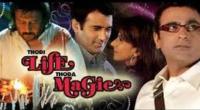
Silsila Hai Pyar Ka Full HD Movie Download

Navagraha Full HD Movie Download

Khwahish Full HD Movie Download

Justice Chowdhary Full HD Movie Download

Isi Ka Naam Zindagi Full HD Movie Download

Janani Full HD Movie Download

Kaaboo Full HD Movie Download

Amar Deep Full HD Movie Download
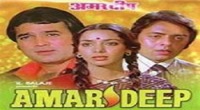
Bhairavi (1996) Full HD Movie Download
.jpg)
Dharmapatni Full HD Movie Download
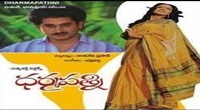
Penmani Aval Kanmani Full HD Movie Download
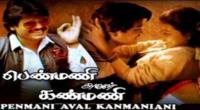
Saptapadi Full HD Movie Download
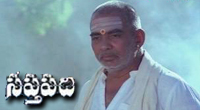
Jagan Mohini Full HD Movie Download

Phir Wohi Darr Full HD Movie Download

Athirathram Full HD Movie Download
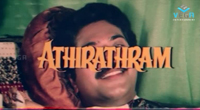
Shakti-The Devine Force Full HD Movie Download

Ariyatha Veethikal Full HD Movie Download

Dupe Dupe Dupe Full HD Movie Download
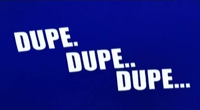
Rajanandini Full HD Movie Download
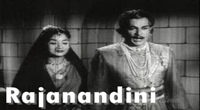
Mere Yaar Ki Shaadi Hai Full HD Movie Download


Download latest Movie from bollywood
Request for Download movie The Cat%27s Meow
- Bollywood movies
- Latest Bollywood movies
- Download all bengali movies
- Download all bhojpuri movies
- Download all english movies
- Download all gujarati movies
- Download all hindi movies
- Download all kannada movies
- Download all malayalam movies
- Download all marathi movies
- Download all oriya movies
- Download all punjabi movies
- Download all tamil movies
- Download all telugu movies
- Bollywood action movies
- Bollywood adventure movies
- Bollywood animation movies
- Bollywood classical movies
- Bollywood comedy movies
- Bollywood crime movies
- Bollywood devotional movies
- Bollywood documentary movies
- Bollywood drama movies
- Bollywood family movies
- Bollywood fantasy movies
- Bollywood historical movies
- Bollywood history movies
- Bollywood horror movies
- Bollywood musical movies
- Bollywood mystery movies
- Bollywood mythological movies
- Bollywood patriotic movies
- Bollywood romance movies
- Bollywood romantic movies
- Bollywood sci-fi movies
- Bollywood social movies
- Bollywood spiritual movies
- Bollywood sports movies
- Bollywood suspense movies
- Bollywood thriller movies
- Bollywood war movies
- Hot actress list
- Hot gujarati actress list
- Hot tamil actress list
- Hot bhojpuri actress list
- Hot assam actress list
- Hot bihari actress list
- Hot jammu and kashmir actress list
- Hot gujarati actress list
- Hot haryana actress list
- Hot konkani actress list
- Hot marathi actress list
- Hot odia actress list
- Hot punjabi actress list
- Hot rajasthani actress list
- Hot kannada actress list
- Hot malayalam actress list
- Hot telugu actress list
- Hot tulu actress list
- Hot Actress list from Indian city
- Hot actress list from ahmedabad
- Hot actress list from alappuzha
- Hot actress list from bangalore
- Hot actress list from bangalore
- Hot actress list from bhopal
- Hot actress list from chandigarh
- Hot actress list from chennai
- Hot actress list from guwahati
- Hot actress list from hyderabad, india
- Hot actress list from indore
- Hot actress list from jaipur
- Hot actress list from kannur
- Hot actress list from kochi
- Hot actress list from kolkata
- Hot actress list from kollam
- Hot actress list from kottayam
- Hot actress list from kozhikode
- Hot actress list from lucknow
- Hot actress list from madurai
- Hot actress list from mangalore
- Hot actress list from mumbai
- Hot actress list from mysore
- Hot actress list from new delhi
- Hot actress list from patna
- Hot actress list from pune
- Hot actress list from thiruvananthapuram
- Hot actress list from thrissur
- Hot actress list from tiruchirappalli
- Hot actress list from vijayawada
- Hot actress list from visakhapatnam
- All Bollywood Movies
- Bollywood Celeb
- >Art Director
- >Audiography
- >Background Music
- >Banner
- >Choreographer
- >Cinematographer
- >Costume Designer
- >Dialogue Writer
- >Director
- >Distributor
- >Editor
- >Executive Producer
- >Hair Stylist
- >Lyricist
- >Music Director
- >Photographer
- >Playback Singers
- >Presenter
- >Producer
- >Production Company
- >Production Designer
- >Screenplay
- >Singer
- >Sound
- >Actor
- >Story Writer
- >Studio
- >Video Director
- >Miscellaneous
- >Publicity (pro)
- >Web Creator
- >Production Labs
- >Publicity Design
- >Publicity Stills
- >Writer
- >Miscellaneous Artists
- >Visual Effects
- >Reporter
- >Music Company
- >Shooting Studios
- >Picturised On
- >Line Producer
- >Co Producer
- >Asst Director
- >Casting Director
- >Cinematography
- >Choreography
- >Dialouge
- >Editing
- >Lyrics
- >Music
- >Story
- >Playback Singer Female
- >Playback Singer Male
- >Actor In A Comic Role (male/female)
- >Child Artiste
- >Ensemble Cast
- >Actor Popular Choice (male)
- >Actor Popular Choice (female)
- >Sa Re Ga Ma Pa Song Of The Year
- >Actor In Supporting Role
- >Actress In Supporting Role
- >Actor In Leading Role
- >Art Direction
- >Actress In Leading Role
- >Sound Recording
- >Costume Design
- >Special Effects
- >Action
- >Actor In A Negative Role
- >Lifetime Achievement Award
- >Cinematic Exellence (director)
- >Cinematic Exellence (male)
- >Cinematic Exellence (female)
- >International Male Icon
- >International Female Icon
- >Actor In A Supporting Role (male)
- >Actor In A Supporting Role (female)
- >Actor In A Comic Role
- >Playback Singer (male)
- >Playback Singer (female)
- >Most Promising Debut (female)
- >Most Promising Debut (male)
- >Most Promising Director
- >Sound Design
- >Lifetime Jodi
- >Marketed Film
- >Jury Award For Best Actor
- >Jury Award For Best Actress
- >Jury Award For Best Film
- >Jury Award For Best Director
- >Playback Singer(male)
- >Lifetime Acheivement Award (male)
- >Excellence Award
- >Jodi Award
- >Performer Of The Year
- >Presented By
 Story of movie The Cat%27s Meow :
Story of movie The Cat%27s Meow :